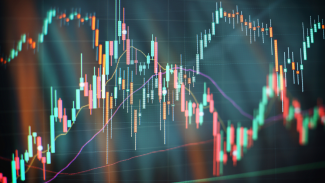
Our Current Thoughts on the Market - September 30, 2022
|
Recently, I had the opportunity to attend Goldman Sach’s Professional Investor Forum at their headquarters in New York City. While volatility has been the theme of 2022, I want to share with you my thoughts on the current markets and key takeaways to help us get through this volatility together. Global markets pulled back again following the Fed's announcement that it would tighten by another 75 basis points and keep rates higher for longer. Major indices are back to their June lows with the S&P 500 falling 24% year-to-date and the Nasdaq down almost 32%.1 Bonds have also struggled as interest rates across the inverted yield curve have jumped, with the 2-year Treasury yield rising to 4.2% and the 10-year to 3.7% - the highest levels since 2007 and 2010, respectively.2 Investors have been navigating this challenging market all year and, for many, it may feel as if there is no relief in sight. Goldman Sachs recently downgraded their year-end price target on the SP 500 to 3600, down from 4300. The S&P 500 is currently trading just above their forecast. While volatility will likely persist, Goldman’s S&P 500 target suggests we could be close to the bottom for U.S. stocks.
|
.jpg?upscale=true&width=1120&upscale=true&name=Joe%20Mazzucco_092922%20(5).jpg) |
|
The reality is that no market environment is ever perfect, whether it's the challenging period following the 2008 financial crisis, in 2020 during the pandemic, or in the early 1980s when the Fed was last battling inflation. Waiting until investing feels comfortable tends to backfire. When viewed with perspective, how investors feel often turns out to be a contrarian indicator since investors are most confident when markets are at their peak, and most uneasy when markets have already bottomed. As the Warren Buffet quote goes, having the fortitude to "be fearful when others are greedy, and greedy when others are fearful" is what rewards investors over time. Investing when others are negative may feel uncomfortable, but this is when prices and valuations are the most attractive.
Bull and bear markets behave very differently |
.jpg?upscale=true&width=1120&upscale=true&name=Joe%20Mazzucco_092822%20(7).jpg) |
|
Eventually, all recessions and bear markets across history stabilized, paving the way for economic expansions and bull markets. These phases of the economic and market cycle are not created equal. The history of modern market and economic cycles suggests that while downturns may be sudden and deep, the subsequent expansions more than make up the difference. As the chart above shows, bear markets since World War II have lasted anywhere from 6 months to two-and-a-half years. During these periods, the U.S. stock market has fallen anywhere from 22% (1957) to 57% (the 2008 financial crisis) at their worst points.
Overreacting to pullbacks can lead investors to miss rebounds |
.jpg?upscale=true&width=1120&upscale=true&name=Joe%20Mazzucco_092922%20(8).jpg) |
|
Of course, past performance is no guarantee of future results, and the point is not that bear markets are insignificant or inconsequential. Instead, it's a reminder to stay invested and diversified in order to benefit from all parts of the market cycle. The chart above highlights the fact that it can take two years for the market to fully recover from the typical bear market. However, the most important point is not when the market fully recovers, but when it begins to turn around. This rebound can happen suddenly even as most investors remain skeptical. Being patient and not focusing on each and every market headline can allow investors to avoid their own worst behavior.
Social Security Cost-of-Living Adjustment is on track to be the best since 1981 |
.jpg?upscale=true&width=1120&upscale=true&name=Joe%20Mazzucco_092922%20(9).jpg) |
|
There are some silver linings in the short-term. First, the Social Security Cost-of-Living Adjustment (COLA) for 2022 will be the largest since the early 1980s. This calculation is based on the average third-quarter inflation rate for urban wage earners and clerical workers (known as CPI-W) each year, which means that it is on track to be above 8%. This is positive for those collecting social security, especially if energy prices and headline inflation continue to decline. This is also positive for those who will be eligible for benefits in the near-term, as your future benefit will reflect this adjustment.
Inflation expectations are improving |
.jpg?upscale=true&width=1120&upscale=true&name=Joe%20Mazzucco_092922%20(10).jpg) |
|
Finally, stock market valuations continue to hover around their most attractive levels in years. The same goes for bonds as yields have increased substantially. The yield on a 1-year U.S. Treasury is hovering around 4%, compared to less than .10% this time last year.3 The forward price-to-earnings ratio for the S&P 500 is 16.5x, only slightly above the long-run historical average of 15.5x, and well below the peak of 23x just two years ago. This suggests potentially healthy returns over the medium-to-long term. With companies still expecting positive earnings growth, there are still many trends working in the market's favor. Additionally, for those of you reinvesting your dividends, you have continued to buy shares as the market has declined. This can potentially supercharge your long-term returns because of the power of compounding. As quoted from Warren Buffet, having the discipline to invest when others are fearful is one of the hallmarks of successful investing. History shows that periods like these may be uncomfortable, but investors who can stay the course are potentially better positioned to pursue their investment and retirement goals. If you have any questions or would like to review your portfolio, please don’t hesitate to reach out. Thank you for the trust you place in me, and for remaining patient during this time of volatility.
|

